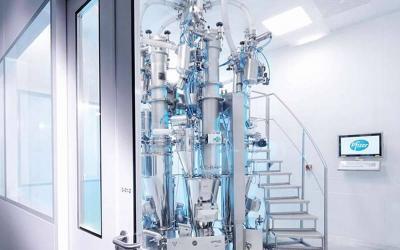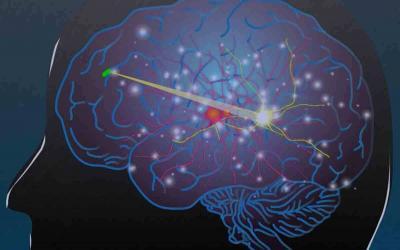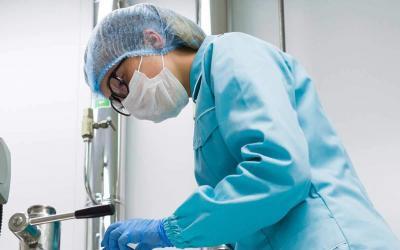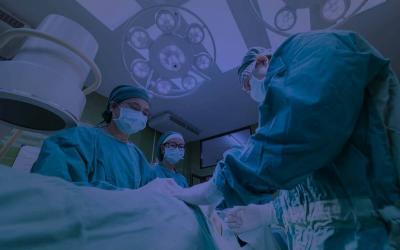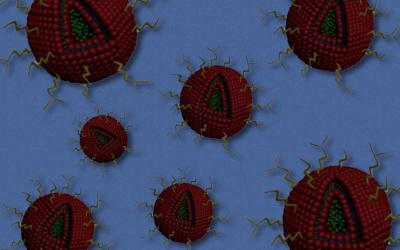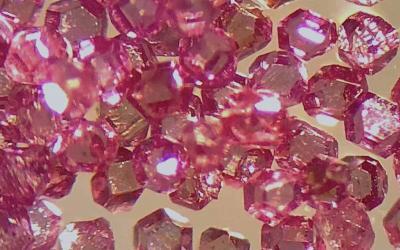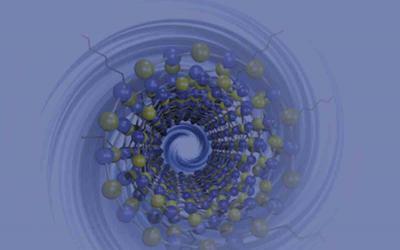Biotechnology Cleanroom News
Get the latest Biotechnology Cleanroom News and updates below. Cleanroom Connect brings you the latest Biotechnology Cleanroom News news from around the world, featuring current topics and news in the Biotechnology, Biotech and Bioscience industries.
Feeding Systems Deliver Continuous Production
The feeding systems are a key part of the new continuous production concept. At Pfizer, the compact arrangement of pharmaceutical feeders supplied by Coperion K-Tron accurately deliver ingredients into the continuous mixing process, thereby guaranteeing consistent and very high quality end products.
Fill-Finish Facility Expansion
Emergent BioSolutions Inc. (NYSE:EBS) today announced the beginning of a $50 million expansion to the company’s Camden fill/finish facility located in Baltimore, Md. The multi-year expansion is expected to be completed in 2021, and will significantly increase the company’s contract development and manufacturing capacity, redundancy, and flexibility.
Wireless Implantable Medical Devices
MIT researchers, working with scientists from Brigham and Women’s Hospital, have developed a new way to power and communicate with devices implanted deep within the human body. Such devices could be used to deliver drugs, monitor conditions inside the body, or treat disease by stimulating the brain with electricity or light.
Fujifilm Acquires Irvine Scientific
Fujifilm acquires Irvine Scientific to maximize their synergy in its significant and growing bio-medical businesses. FujiFilm expects increased demand and needs of biopharmaceutical products and regenerative medicine therapy and is driving current rapid growth of the cell culture media market and estimates continued strong growth in the coming years.
Hospital Superbug Infects Medical Devices
The antibiotic-resistant Acinetobacter baumannii bacterium is one of the most globally harmful bacteria that causes nosocomial infections. Researchers at the University of Turku have discovered that the bacterium attaches to plastic medical devices using tiny finger-like structures. The researchers were able to develop antibodies that prevent the bacterial spread. Infections related to hospitals and medical devices form major healthcare problems worldwide. These infections are associated with the ability of pathogens to colonise both biotic and abiotic surfaces.
Nanowires convert heat to electricity more efficiently
Led by Drs Andrij Vasylenko, Samuel Marks, Jeremy Sloan and David Quigley from Warwick’s Department of Physics, in collaboration with the Universities of Cambridge and Birmingham, the researchers have found that the most effective thermoelectric materials can be realised by shaping them into the thinnest possible nanowires.
Chemical-Feasting Bacteria for Water Decontamination
Chemical-Feasting Bacteria Provide New Key for Water Decontamination. NJIT researchers find “catalyst” behind a rare bacteria’s ability to feed on and remove the contaminant 1,4-dioxane from impacted groundwater and drinking water. Scientists at New Jersey Institute of Technology (NJIT) have uncovered a rare enzyme in bacteria with the ability to degrade the “likely human carcinogen” and water contaminant, 1,4-dioxane.
Nanoplastics Threaten Marine Life
Plastic nanoparticles – these are tiny pieces of plastic or nanoplastics less than 1 micrometre in size – could potentially contaminate food chains, and ultimately affect human health, according to a recent study by scientists from the National University of Singapore (NUS). They discovered that nanoplastics are easily ingested by marine organisms, and they accumulate in the organisms over time, with a risk of being transferred up the food chain, threatening food safety and posing health risks.
Sterile Manufacturing Facility Acquisition by Avara Pharmaceutical Services
Avara Pharmaceutical Services, a world-class contract development and manufacturing organization (CDMO), today announced that it has agreed to acquire the largest sterile manufacturing facility for injectable medicines in Canada from a leading global pharmaceutical company, as part of a continuing expansion of its global footprint.
Nanoparticles Fight Brain Cancer
Nanoparticles carrying two drugs can cross the blood-brain barrier and shrink glioblastoma tumors. Glioblastoma multiforme, a type of brain tumor, is one of the most difficult-to-treat cancers. Only a handful of drugs are approved to treat glioblastoma, and the median life expectancy for patients diagnosed with the disease is less than 15 months.
Microscale Diamonds for Medical Devices
Team led by Berkeley Lab and UC Berkeley researchers exploits tiny defects in diamonds to pave the way for enhanced biological imaging and drug studies. An international team led by scientists at the Department of Energy’s Lawrence Berkeley National Laboratory (Berkeley Lab) and UC Berkeley discovered how to exploit defects in nanoscale and microscale diamonds to strongly enhance the sensitivity of magnetic resonance imaging (MRI) and nuclear magnetic resonance (NMR) systems while eliminating the need for their costly and bulky superconducting magnets.
Boron Nitride Nanotubes New Nano Building Block
Boron nitride nanotubes, like their carbon cousins, are rolled sheets of hexagonal arrays. Unlike carbon nanotubes, they’re electrically insulating hybrids made of alternating boron and nitrogen atoms. Insulating nanotubes that can be functionalized will be a valuable building block for nanoengineering projects, Martí said. “
Biotechnology News
Biotechnology Cleanroom News and Advancements
The Biotechnology Cleanroom Industry supports the environmental cleanroom and controlled environmental systems for the biotechnology, biotech and bioscience industries. The biotechnology industry makes use of living biological systems and organisms to develop or make products. Often times, biotech organizations are focused on implementing technological applications that uses biological systems, liv
ing organisms, or derivatives of biological organisms. Cleanroom Connect provides the latest Biotechnology Cleanroom News from various biotech, bioscience, and biotechnology industries. Subscribe today to receive aerospace news and updates directly to your mailbox.
Since the first DNA cloning experiments almost a half century ago, biotechnology techniques such as genetic engineering have developed to allow for the creation of engineered biological molecules. The biotechnology field focuses on designing and innovating new and different biological microorganisms and cells, constantly finding ways to create new gene formations and figure out how they work. The research and development of gene formations often happens in transgenic animals and plants. The biotechnology revolution has brought on an abundance of commercial applications that include gene cloning, directed mutagenesis, DNA sequencing, RNA interference, biomolecule labeling and detection, and nucleic acid amplification.
Stay connected to Cleanroom Connect to receive the latest Biotechnology Cleanroom News and events!
Keywords: Biotechnology Cleanroom News, biotech news, bioscience news, gene cloning, directed mutagenesis, DNA sequencing, RNA interference, biomolecule labeling, biomolecule detection, nucleic acid amplification, biomedical engineering, chemical engineering, tissue engineering, biopharmaceutical engineering, genetic engineering
